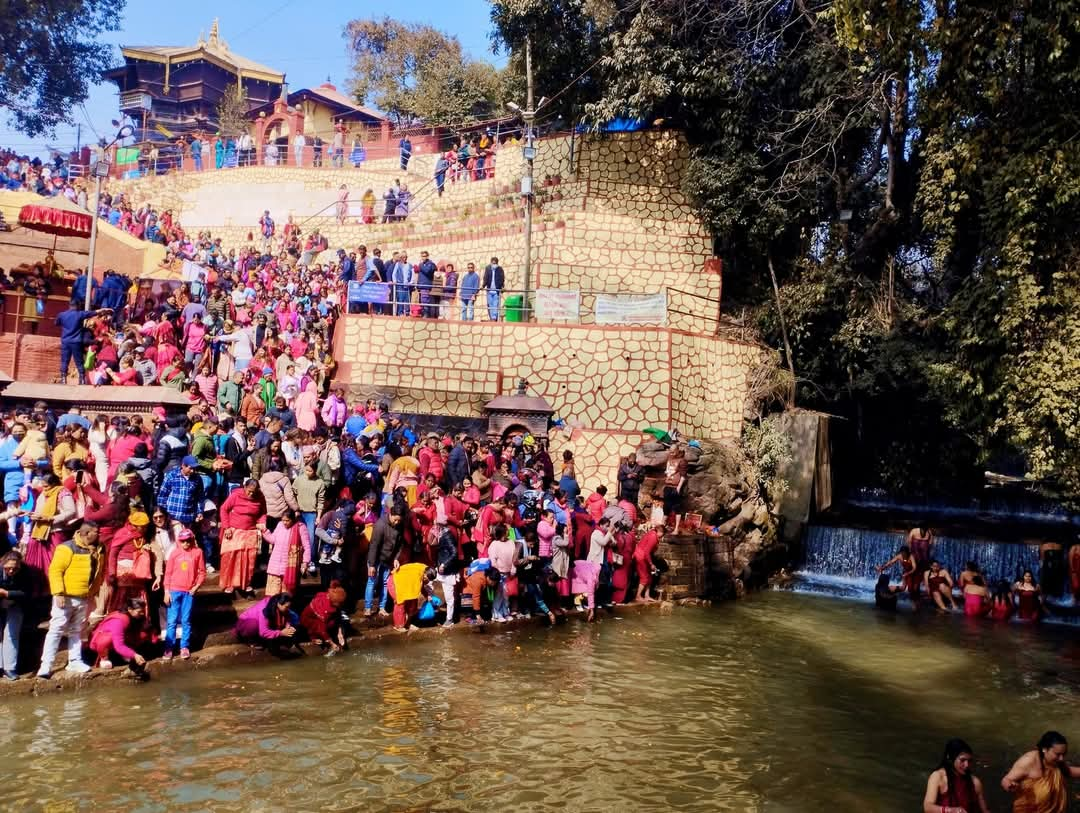Sankhu, Kathmandu - Amid the bustling crowd of pilgrims at the annual Shree Swasthani Devi Mela in Sankhu, the banks of the Salinadi River come alive with devotion and cultural pride. But beneath the religious fervor lies a deeper connection—one that intertwines tradition with environmental stewardship.
The River as a Lifeline
The Salinadi River, central to this month-long festival, is not just a sacred waterbody but also a critical natural resource for the local community. Over the years, the river has faced threats from pollution, unregulated urbanization, and climate change. The festival, however, serves as a timely reminder of the symbiotic relationship between people and nature.
“Devotees bathe in the river with the belief that it cleanses sins and purifies the soul. But how can this belief endure if the river itself is unclean?” asks Hari Maya Shrestha, a local environmental activist. Her question echoes a growing concern: preserving the sanctity of sacred sites while addressing environmental degradation.
Tradition Inspiring Conservation
This year, a unique initiative during the Mela caught the attention of many. Local youth groups, in collaboration with environmental organizations, launched a "Clean Salinadi Campaign." Volunteers worked tirelessly to remove waste, plant trees, and educate visitors on the importance of keeping the river clean.
The campaign also highlighted the critical role rivers play in local ecosystems and livelihoods. “When we protect Salinadi, we’re not just protecting a sacred site; we’re preserving biodiversity and ensuring water security for future generations,” said Suman Gurung, an environmental science student leading the effort.
Sustainability Meets Culture
The Shree Swasthani Mela demonstrates how cultural traditions can align with modern environmental priorities. Rituals involving biodegradable offerings, waste segregation at the festival site, and water quality monitoring were among the sustainable practices introduced this year.
Furthermore, discussions are underway to integrate environmental awareness into the Swasthani Katha readings, using ancient stories as a medium to highlight contemporary challenges like climate change and pollution. Such initiatives reflect a promising shift toward blending age-old spirituality with ecological responsibility.
Development with a Green Vision
The Mela also brings economic benefits to Sankhu, as thousands of visitors boost local businesses. Authorities and NGOs have emphasized the importance of eco-tourism—encouraging development that supports both the economy and the environment. Improved waste management systems, renewable energy sources for lighting, and sustainable transport options for pilgrims are being explored.
The Way Forward
As the festival draws to a close, its legacy remains a topic of reflection. Can the fervor of devotees inspire long-term environmental action? Will future generations continue to see the Salinadi River as both a spiritual symbol and an ecological treasure?
In a time when development often comes at the cost of natural resources, the Shree Swasthani Mela offers a powerful narrative: that tradition and progress can coexist, and that safeguarding nature is as sacred as honoring the divine.
By Ecosphere News, promoting harmony between culture and conservation.